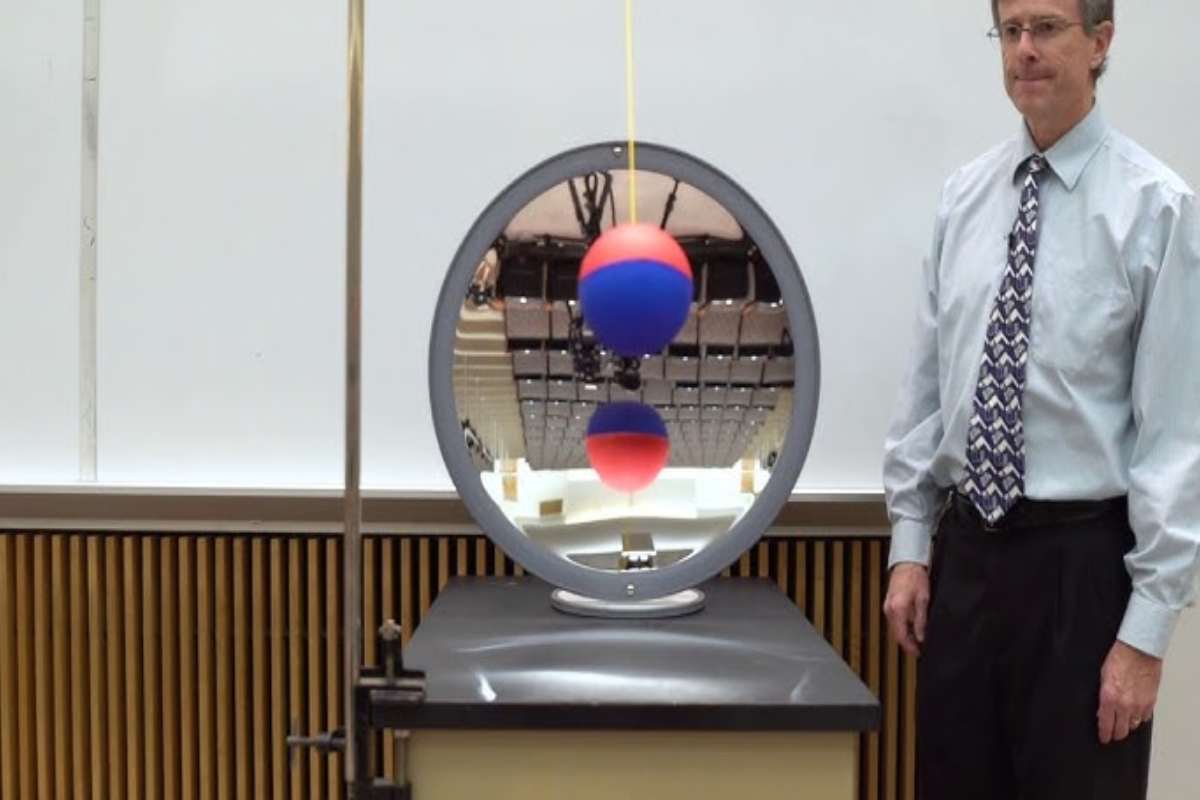The Magic Of The Concave Mirror: Self-viewing or looking at one’s reflection has fancied human beings from ancient times. We all have gone to funfairs and laughed at ourselves and others, looking at ourselves where different mirrors reflected funny reflections.
The first time any human, or a beast for that matter, would have seen their reflections would be in a pool of still waters. However, humans have used their ingenuity to make mirrors. They have used various materials to make mirrors: stones, polished metals, such as copper, steel, aluminium, silver, and gold.
An interesting study carried out in the United Kingdom revealed some very interesting and surprising facts. In the study, they found that, on an average day, men look into the mirror 23 times, while women use the mirror 16 times. Interestingly, the duration spent in front of the mirror was not mentioned.
Kings and queens, and nobles alike, have boasted about their mirrors. Museums are filled with fanciful ancient mirrors throughout the world. The archaeologists in Anatolia (modern-day Turkey) found the mirrors were made from polished stone such as black volcanic glass obsidian.
At the same time, the ancient Egyptians made mirrors of metal (copper, bronze, silver, tin, etc.). A book, “Record of Ancient Mirrors, was written in 800 AD, during the Tang Dynasty that ruled China between 618 AD and 907 AD. It describes the method used to craft solid bronze mirrors.
In modern times, mirrors are made from metals like silver and aluminium are more commonly used because of their reflective properties. A thin layer of these metals are applied on a plane surface and polished till they reflect light or image.
Let’s know plane, convex and concave mirror uses in this article.
What Are Mirrors?
Fundamentally, mirrors are the surfaces that reflect light and images. It could be the water reflecting the sunset, sun rays bouncing off the dewdrops in the morning, or any polished surface.
Types Of Manmade Mirrors:
There are three types of mirrors, and differentiated by their reflective surfaces –
- Plane Mirror
- Convex Mirrors
- Concave Mirrors
Fig. 1
- Plane Mirrors – These are the most commonly used mirrors. Plane Mirrors have a plane surface. They are found in the dressing rooms at homes, washrooms, salons, jewellery shops, etc. The light ray bounces off the surface of the Plane Mirror at the same angle it hits the surface.
The principal axis is perpendicular to the surface of the Plane Mirrors. Suppose, if the flight arrives at an angle of 45 degrees, it will reflect at the same angle on the other side of the principal axis.
- Convex Mirrors – Convex Mirrors are curved reflecting surfaces. The curve reflecting surface is bulged outward and towards the light source. Convex Mirrors increase the field of view. (“Field of view” is described as the field that is reflected by the mirror. In the case of the Convex Mirrors, the “field of view” is increased.
It is directly proportionate to the curvature of the surface). Convex Mirrors are commonly used in buildings, passageways, hospitals, hotels, schools, at acute road corners that are difficult to navigate.
- Concave Mirrors – Concave Mirrors can be distinguished by the inward reflecting surfaces. The bulge of the Concave Mirrors is away from the source of light. Concave Mirrors are more useful than Concave Mirrors. They are used in electric torches, other artificial light sources, shaving mirrors, searchlights, etc.
Concave Mirrors are used in more complex and sophisticated devices, such as satellite dishes, compressed camera lenses, camera flashguns, among other things.
Concave Mirror
Fig. 2
You may have seen long telescopes. But the scientists have compressed them by using the Concave Mirrors. These telescopes are called Catadioptric Telescopes.
Catadioptric Telescope
Fig. 3
The figure explains how the light rays could be controlled (collected) using the CONCAVE MIRRORS. Scientists use essentially the same design and build compressed or Catadioptric systems of lenses used in photography.
Conclusion
The ability or property of the Concave Mirror to collect light rays is beneficial in modern science. You would have noticed the reflective mirror in an electric handheld torch. Well, that is a Concave Mirror.
The efficiency of a light source, the bulb, is multiplied by using the Concave Mirror in the electric torchlight. Instead of the light spreading nearly 360 degrees, the Concave Mirror collects it and focuses it in one direction.
This property of the Concave Mirror has been incorporated to build highly sophisticated scientific devices. They are used to build microscopes to concentrate the light rays of the specimen being observed by the lab technicians.

